- Details
- Hits: 3377
A documentary film about people-powered change to be worked with, not consumed.
Down to Earth https://downtoearthfilm.com is the story of one family’s call to freedom after questioning the home, school and work system. As they quit the rat race we follow them on a five year journey in search of the wisdom of sages and shaman, or Earth Keepers, hidden in the remote tribal communities of Australia, the Amazon, Africa, the Andes, India and Ireland.
Gaining access to never filmed before tribes in the outback, desert and jungle with just a backpack and a camera each was no mean feat. Despite the different locations the family kept making the same connections, having the same conversations, just with different faces. And the Earth Keepers sharing their insights and wisdom for the first time with outsiders acknowledge that, "Now is the time for change.”
We are family
The film grew from director Rolf Winter’s dream of finding a retreat in nature for his wife and three young children, then aged 6, 7 and 10 (see his TED talk below). After spending a year in Hiawatha Forest in Michigan the family encounter Nowaten, a medicine man whose name means "He who listens," living in isolation there. He reluctantly agrees to being filmed, becoming the film’s main contributor.
Nowatan believes there is no purpose in living if you lose the land and forests, because we depend on forests for our spiritual connection and wellbeing. People are lost because they have lost connection with nature, and we are all members of nature. He says, “Life is simple, we complicate it, take only what you need.”
But, as Rolf says, we can’t all go back to the forest. So the film asks how do we lead a connected life in a fast-paced world? Real change is only going to happen with a changed mindset of you and me. The diverse problems facing humanity can no longer be delegated to our politicians and scientists, who ultimately are a reflection of us, the people. The time has come to transform our lives and create a new story, our own story. How exciting!
- Details
- Hits: 2723
Uncovering the deep ecological methods and processes of Rudolf Steiner’s biodynamic agriculture.
One farmer, One cow, One planet
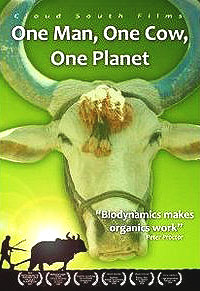 What if the world were an apple? One quarter of the apple is land and the rest is water. Cut the land in half and put aside that which is deserts and mountains. Quarter what is left and the peel of one of those quarters represents the topsoil that must feed the whole world. This analogy sets out the challenge facing scientists and farmers who understand the importance of getting the best out of the available soil to provide abundant and nutritious food for everyone on the planet [1].
What if the world were an apple? One quarter of the apple is land and the rest is water. Cut the land in half and put aside that which is deserts and mountains. Quarter what is left and the peel of one of those quarters represents the topsoil that must feed the whole world. This analogy sets out the challenge facing scientists and farmers who understand the importance of getting the best out of the available soil to provide abundant and nutritious food for everyone on the planet [1].
Peter Proctor is a soil scientist who has worked with the stuff for over sixty years [2]. His favourite invertebrate is the earthworm, which he describes as “the unpaid servant of soil health” and his favourite animal is the cow because of all the dung it provides. Dung is something that Proctor prizes more highly than gold, jewels, fossil fuels, or many other natural resources. His recommendation for green-fingered gardeners and for the long term sustainability and security of global agricultural systems is the same: a complex preparation of medicinal plant material (see Box) added to compost, manure and slurry. The mineral enriched compost preparations lessen soil compaction, enhance the quality of topsoil, increase microbial activity and encourage earthworms.
Known as the father of the modern biodynamic farming movement in New Zealand, Proctor’s work with crisis-struck farmers in India (see also Stem Farmers Suicides with Organic Farming )[3] over the past fifteen year provides a strong grassroots alternative to industrialised conventional agriculture, which is failing on all counts (see “Food futures now, organic, sustainable and fossil fuel free” [4]). Like many other critics, he believes that we have become separated from our food by a global system of multinational corporations controlling what we grow and what we eat, and biodynamic agriculture may be the last chance this planet has for a healthy, secure, and ecologically efficient food supply.
- Details
- Hits: 3939
7th December 2012
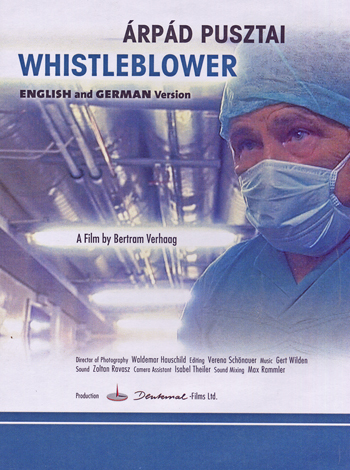 Bertram Verhaag’s film Scientists Under Attack explores the ideological problems of corporate profiteering, control and contamination of the food chain by genetic engineering. In Whistleblower, Verhaag uses Arpad Pusztai’s ongoing mission of presenting the hard scientific facts so that people can see the potential health risks of eating GM food for themselves.
Bertram Verhaag’s film Scientists Under Attack explores the ideological problems of corporate profiteering, control and contamination of the food chain by genetic engineering. In Whistleblower, Verhaag uses Arpad Pusztai’s ongoing mission of presenting the hard scientific facts so that people can see the potential health risks of eating GM food for themselves.
Pusztai is famous for his 1998 World in Action television interview, which sparked a media frenzy. When asked if he would eat the GM potato he was testing, he said, "If I had the choice I certainly would not eat it.... I find that it’s very very unfair to use our fellow citizens as guinea pigs."
The interview took place during Pusztai's comparison feeding trial using the Desiree GM potato and a non-GM potato at the Rowett Research Institute in Scotland. The point of Desiree was to see whether the genetic material inserted into it from the lectin (protein) of the bulb of the snowdrop plant protected it from aphid attack, which it did. The lab rats were not supposed to have been touched by eating the engineered potato. However, the rats eating Desiree were developing differently to the controls. Pusztai had found a problem with the GM potato.
He shared his finding early because the experiments showed 36 very highly significant differences in the animals eating the GM potato. For example, there were physiological changes to the gut, which increased in size even though the animal was not growing as fast, and the liver and kidneys were not developing as well as the animals in the comparison groups.
- Details
- Hits: 3616
4th August 2012
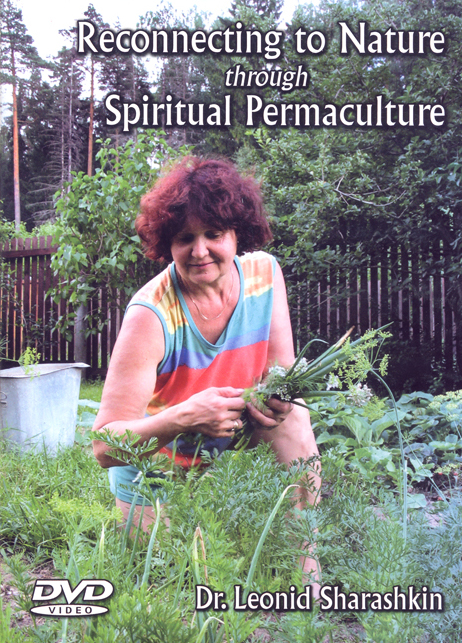 Reconnecting to Nature through Spiritual Permaculture is a DVD presentation in which Dr Leonid Sharashkin explores the extraordinary explosion of permaculture gardening in Russia. The success of the dacha garden movement was partly inspired by the revelations of Anastasia, a beautiful young woman with amazing perceptual powers, who was discovered in 1995 living alone in the remote, wild forests of Siberia.
Reconnecting to Nature through Spiritual Permaculture is a DVD presentation in which Dr Leonid Sharashkin explores the extraordinary explosion of permaculture gardening in Russia. The success of the dacha garden movement was partly inspired by the revelations of Anastasia, a beautiful young woman with amazing perceptual powers, who was discovered in 1995 living alone in the remote, wild forests of Siberia.
She imparted her extensive knowledge of untapped human potential to an entrepreneur on a quest to find the sacred Siberian Cedar trees, which reportedly after 500 years of growth have begun to audibly ring or vibrate. After meeting Anastasia, Vladimir Megre abandoned his venture and began writing down her messages to the world in nine volumes called The Ringing Cedars of Russia. Dr Sharashkin is the editor of the Anastasia series in English and the translator of Schumacher's Small is Beautiful and The Secret Life of Plants into Russian.
In this presentation he shares his insights into Russia’s gardening revolution where 35 million families or 70% of the population is growing 51% of all agricultural produce on just 7% of agricultural land. In comparison, corporate farms require 83% of available land, while independent farmers claim the remaining 10%. Paradoxically, the percentage of food grown by people is increasing as the rate of land available to them decreases. Recent figures suggest that Russian gardeners grow 54% food on 3% of marginal land.
- Details
- Hits: 3583
12th April 2012
Taggert Siegel and Jon Betz Collective Eye Collection DVD and (eds) Clairview 2011 ISBN 9781905570348 144pages
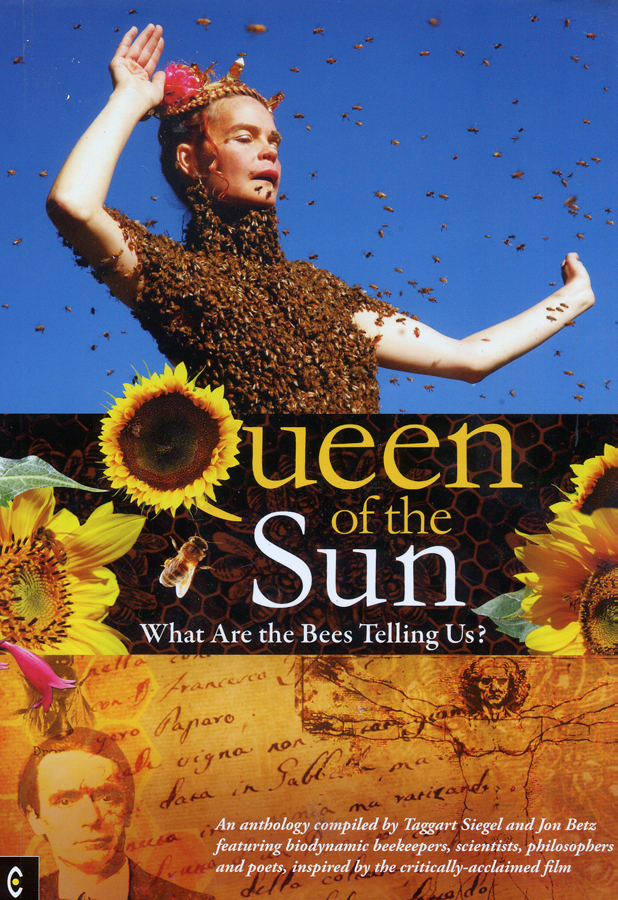 The Queen of the Sun documentary film is a beautifully shot travelogue of the best and the worst habitats for bees survival [1]. The best habitats are the seamless tracts of wildflower meadows and the sanctuary gardens specifically created for bees that provide food all year round. The worst habitats are the endless rows of monocultures that provide food for only three weeks of the year during flowering season.
The Queen of the Sun documentary film is a beautifully shot travelogue of the best and the worst habitats for bees survival [1]. The best habitats are the seamless tracts of wildflower meadows and the sanctuary gardens specifically created for bees that provide food all year round. The worst habitats are the endless rows of monocultures that provide food for only three weeks of the year during flowering season.
On this soulful journey we meet the biodynamic, organic, urban garden and rooftop beekeepers intent on pulling the honey bee back from the brink of disaster. We go deep inside the hive and see the wonder of the snow white wax that brings the light of the bee and the sun in the winter. We watch the patient and hopeful beekeepers with their hives reflecting on what was, until 2006 and the emergence of CCD or Colony Collapse Disorder, 10,000 years of productive co-operation between humans and bees.
Its starting point for explaining CCD is the prediction made by Rudolf Steiner in 1923 during a series of lectures to beekeepers in Switzerland, that bees would die out within 80-100 years if they were reproduced by using artificial methods only. Since Steiner’s warning, industrialised and mechanised beekeeping practices have become standard, along with an increase in the use of toxic pesticides, and now genetic engineering. The result is that over the last 15 years 70-90% of bee colonies have been lost worldwide.
Gunter Hawk has set up Spikenard Farm, a biodynamic bee santuary in Virginia. He believes that the loss of our primary food pollinators is an even more pressing concern than climate change. Scott Black of the Xerces Society, an international organization that protects wildlife agrees. He says of bees that, “They are doing all the hard work for us and without them we would be in big trouble.” This film is a gentle, but persuasive reminder of the essential and eternal relationship between pollinators, plants and people.
- Details
- Hits: 4980
A film that gets to the bottom of the mystery of the disappearing bees with some success
 The Vanishing of the Bees [1] is the cinematic equivalent of “Watch with Mother” about the importance to the planet of the honeybee. It patiently unravels the mysterious Colony Collapse Disorder (CCD) implicated in the mass disappearance of honeybees from their hives across the world. Bees have one of the most important jobs in nature. Without their busy pollination of plants and flowers we would lose one in every three bites of the food that we eat.
The Vanishing of the Bees [1] is the cinematic equivalent of “Watch with Mother” about the importance to the planet of the honeybee. It patiently unravels the mysterious Colony Collapse Disorder (CCD) implicated in the mass disappearance of honeybees from their hives across the world. Bees have one of the most important jobs in nature. Without their busy pollination of plants and flowers we would lose one in every three bites of the food that we eat.
- Details
- Hits: 2890
Wednesday, 07 October 2009
Climate change, the most important story of all time is dramatized in a film that just won't go away.
The 10:10 Challenge for Copenhagen
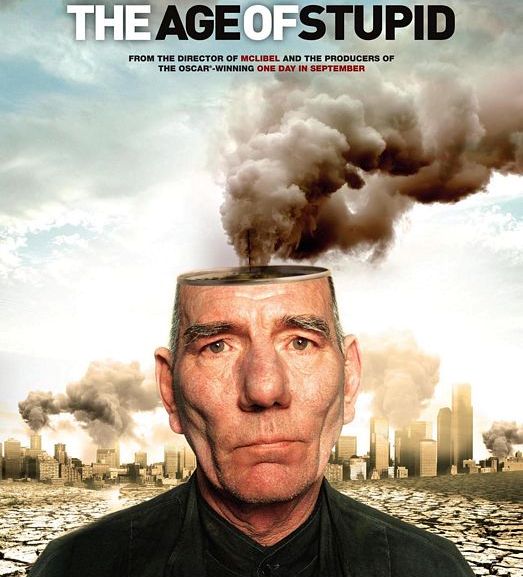 Greenpeace is strongly behind the re-release of The Age of Stupid that aims to create a fuss about climate change. The film's green carpet premier in a solar powered eco-tent in London earlier in 2009 was well received, but did not make the impact that many thought it deserved. Its recent simultaneous world-wide screening via satellite is a reminder that the countdown to the UN Meeting on Climate Change (COP15) in Copenhagen has commenced and the need to set sensible and achievable targets for reducing greenhouse gas emissions is pressing.
Greenpeace is strongly behind the re-release of The Age of Stupid that aims to create a fuss about climate change. The film's green carpet premier in a solar powered eco-tent in London earlier in 2009 was well received, but did not make the impact that many thought it deserved. Its recent simultaneous world-wide screening via satellite is a reminder that the countdown to the UN Meeting on Climate Change (COP15) in Copenhagen has commenced and the need to set sensible and achievable targets for reducing greenhouse gas emissions is pressing.
Britain and the EU are ready to commit to a 20 percent reduction of carbon emissions by 2020. But Fanny Armstrong, the film's director believes that we need to do something sooner than that. She has challenged the energy secretary Ed Milliband to pledge that the British Government will be the first government to cut emissions by 10 percent in 2010. Greenpeace is calling on the worlds' leaders to come together at Copenhagen in December to agree tough and binding measures to prevent the reality and consequences of catastrophic climate change.
The 10 percent reduction (http://www.1010uk.org/) can easily be achieved if everyone makes small changes to their lifestyle. For example by using energy saving light bulbs, turning down the heating, flying less frequently, driving less and slightly modifying food habits. Reaching targets of 30-40 percent reductions may require more than simple public participation, says Armstrong. However, proponents of renewable technologies say that it is possible to be 100 percent renewable by 2050. (see Green Energies 100% Renewables by 2050 which will be distributed at Copenhagen)







